
|
|
|
|
|
|
Classic Bikes
Custom Bikes
Individual
Racing Bikes AJP
AJS
Aprilia
Ariel
Avinton / Wakan
Bajaj
Benelli
Beta
Bimota
BMW
Brough Superior
BRP Cam-Am
BSA
Buell / EBR
Bultaco
Cagiva
Campagna
CCM
CF Moto
Combat Motors
Derbi
Deus
Ducati
Excelsior
GASGAS
Ghezzi Brian
Gilera
GIMA
Harley Davidson
Hero
Highland
Honda
Horex
Husaberg
Husqvarna
Hyosung
Indian
Jawa
Kawasaki
KTM
KYMCO
Laverda
Lazareth
Magni
Maico
Mash
Matchless
Mondial
Moto Guzzi
Moto Morini
MV Agusta
MZ / MuZ
NCR
Norton
NSU
Paton
Peugeot
Piaggio
Revival Cycles
Roland Sands
Royal Enfield
Sachs
Sherco
Sunbeam
Suzuki
SWM
SYM
Triumph
TVS
Ural
Velocette
Vespa
Victory
Vincent
VOR
Voxan
Vyrus
Walt Siegl
Walz
Wrenchmonkees
Wunderlich
XTR / Radical
Yamaha
Zero
Video
Technical
Complete Manufacturer List
|
Kawasaki ZX-25R Ninja / SE |
|
Make Model |
Kawasaki ZX-25R Ninja / SE |
|
Year |
2021 |
|
Engine |
Four stroke, transverse four cylinder, DOHC, 4 valve per cylinder |
|
Capacity |
249.8 cc / cu-in |
|
Bore x Stroke |
50.0 x 31.8 mm |
|
Compression Ratio |
11.5:1 |
|
Cooling System |
Liquid-cooled |
|
Induction |
Fuel injection: ø30 mm x 4 |
|
Ignition |
Digital |
|
Starting |
Electric |
|
Max Power Ram Air |
37.5 kW / 50 hp @ 15500 rpm |
|
Max Torque |
22.9 Nm / 16.9 lb-ft @ 14500 rpm |
|
Clutch |
Wet multi-disc, manual |
|
Transmission |
6-speed |
| Final Drive | Chain |
|
Final Reduction Ratio |
3.429 (48/14) |
| Primary Reduction Ratio | 2.900 (87/30) |
|
Frame |
High tensile steel trellis |
|
Front Suspension |
37 mm Inverted fork (SFF-BP) |
|
Front Wheel Travel |
120 mm / 4.7 |
|
Rear Suspension |
Horizontal Back-link, gas-charged shock with spring preload adjustability |
|
Rear Wheel Travel |
116 mm / 4.6 in |
|
Front Brakes |
Single 310 mm semi-floating disc, 4 piston caliper |
|
Rear Brakes |
Single 220 mm disc, 1 piston caliper |
|
ABS System |
Standard |
|
Front Tyre |
110/70R17M/C (54H) |
|
Rear Tyre |
150/60R17M/C (66H) |
|
Rake |
24.2° |
|
Trail |
99 mm / 3.9 in |
|
Dimensions |
Length 1980 mm / 77.9 in Width 750 mm / 29.5 in Height 1110 mm / 43.7 in |
|
Wheelbase |
1380 mm / 54.3 in |
|
Seat Height |
- |
|
Ground Clearance |
125 mm / 4.9 in |
|
Wet Weight |
180kg / 396 lbs - SE: 182 Kg / 401 lbs |
|
Fuel Capacity |
15 Litres / 3.9 US gal |
Intense In-Line Four Engine
The Ninja ZX-25R is equipped with an all-new engine design – a 250cc, In-Line Four, Liquid Cooled engine – the only one in its class. This new engine delivers performance that eclipses other 250cc models in the field. Direct throttle response and a flexible character that combines strong low-mid range torque for city riding, and intense high-rpm power that can be enjoyed when track riding. High-spec ECU that uses the same base platform as the ZH2, and is loaded with Kawasaki’s latest electronics
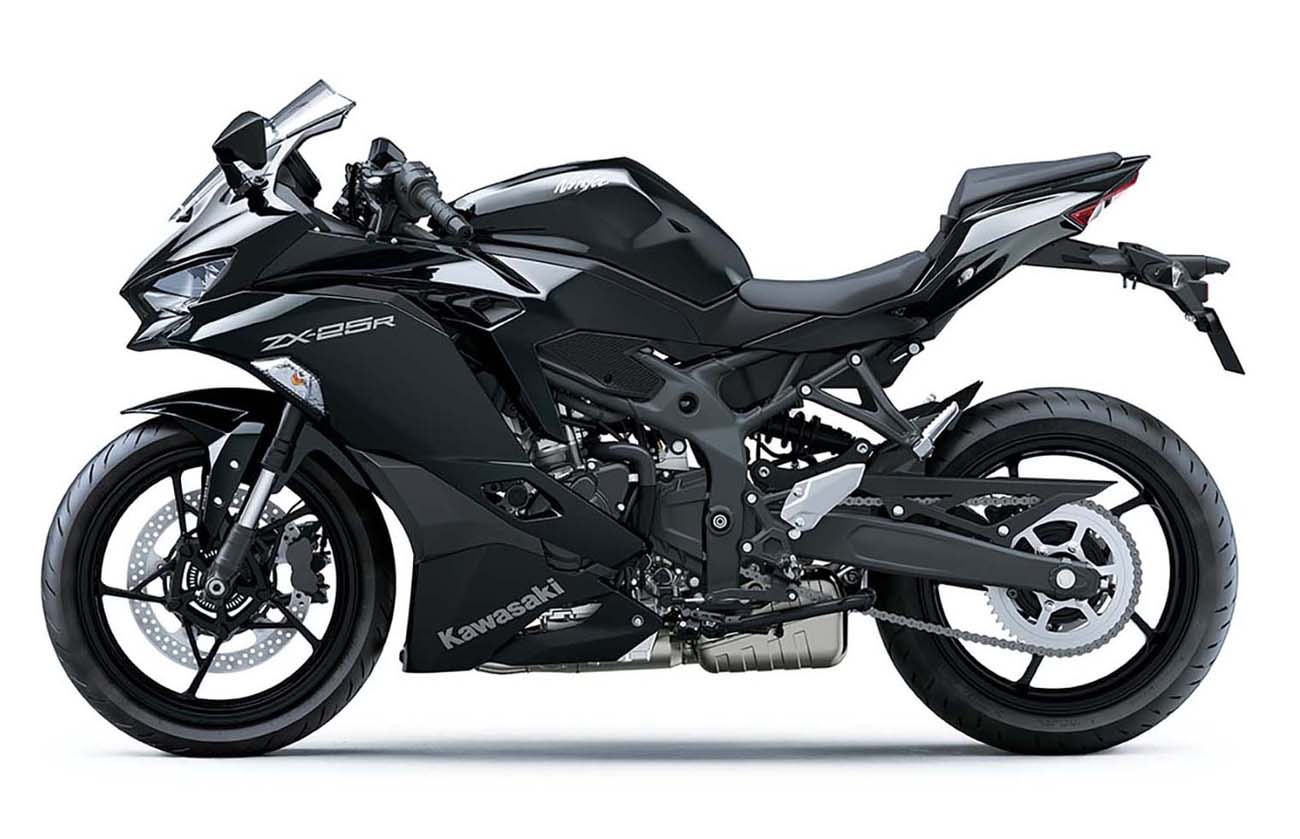
The differences between the base model and the Special Edition are the additions of ABS, selectable riding modes, quick-shifter (both ways), and traction control as standard on the SE.
Kawasaki ZX-25R sports an aggressive stance highlighted by split LED headlamps, muscular 15-litre fuel tank, step-up style seats, and black aesthetics. The ZX-25R comes equipped with a semi-digital instrument panel that includes an analogue tachometer and a digital display for other essential readouts.
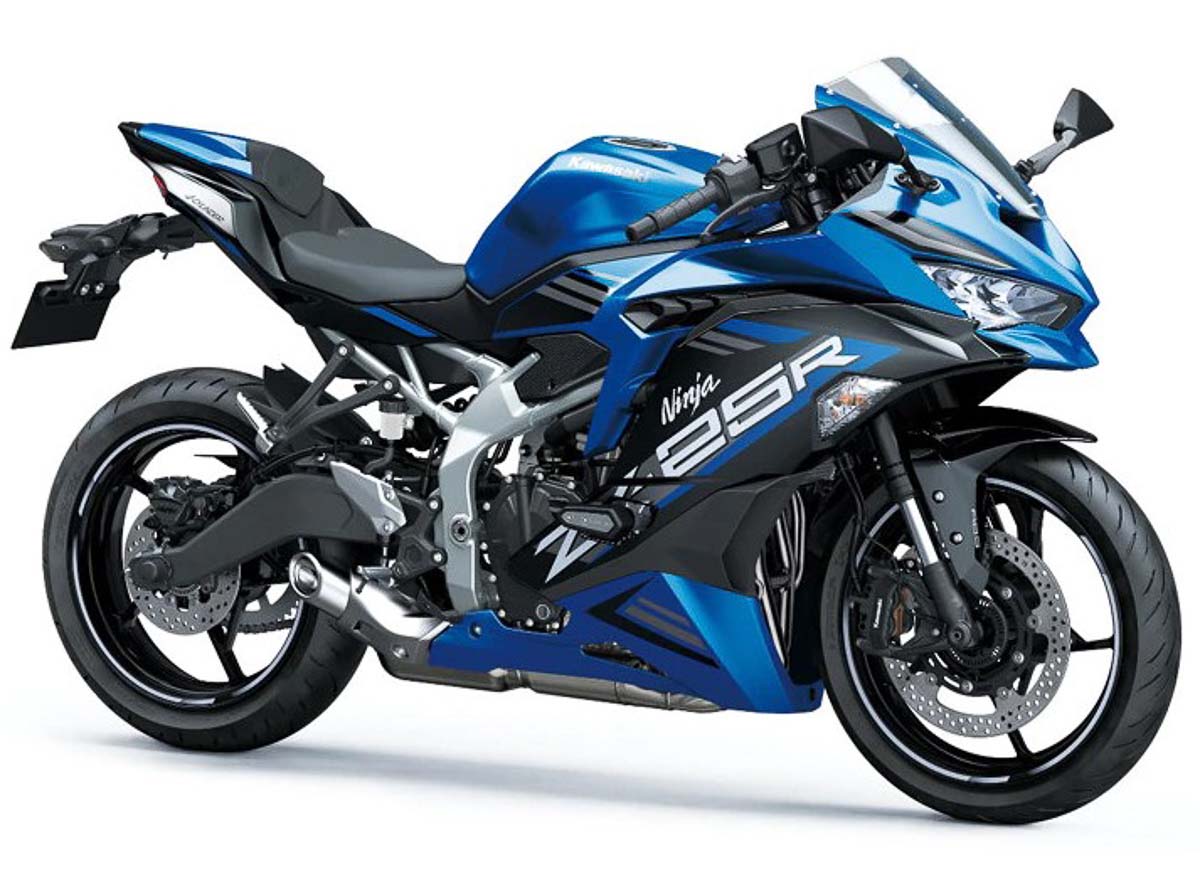
The 250 cc, liquid-cooled, in-line four-cylinder engine that is coupled to a six-speed transmission of the Ninja ZX-25R makes 50hp (37.5 kW) with Kawasaki’s dubious “RAM Air” power rating, which in normal numbers should mean a 49hp, with 16.9 lbs-ft / 22.9 Nm of peak torque.
Curb weight is 180kg / 396 lbs for the base model, and 182kg / 401 lbs for the ABS SE model.
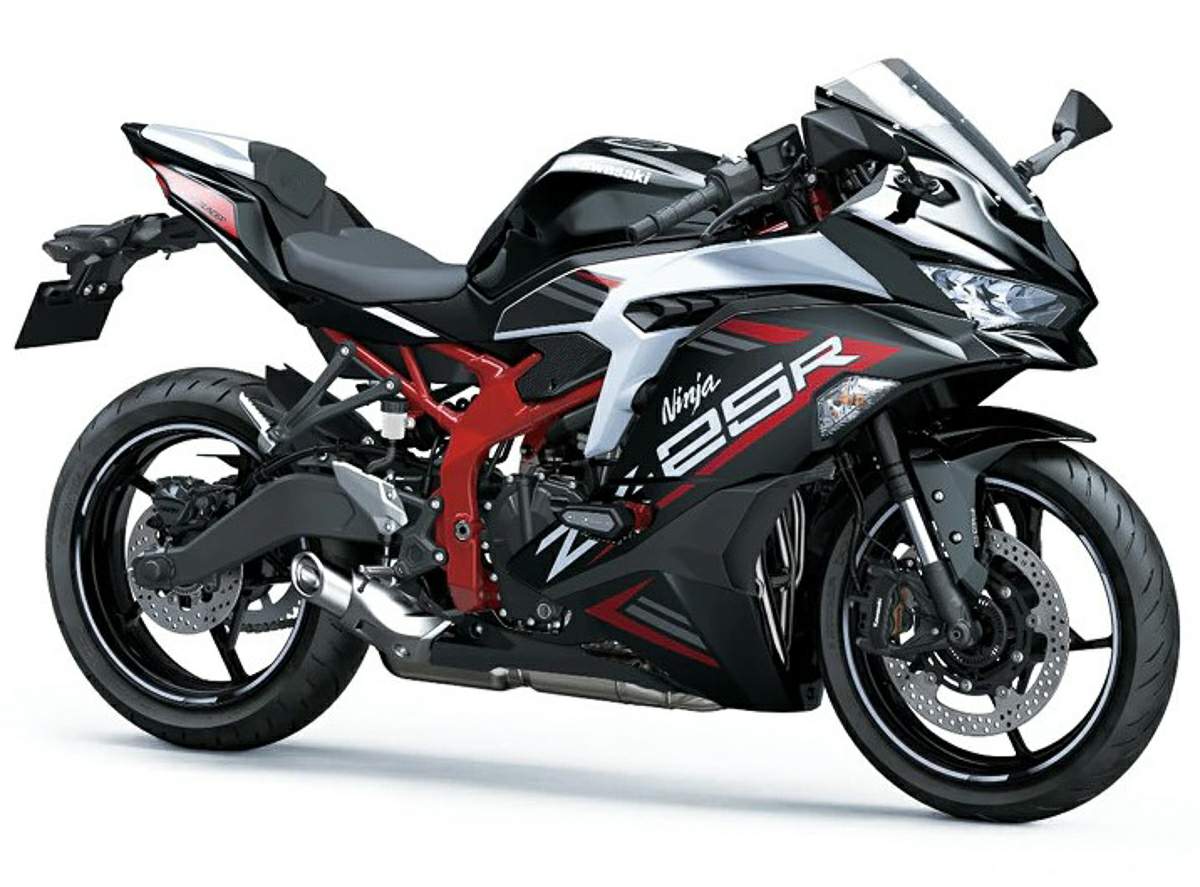
WSBK-inspired Chassis
Key chassis dimensions were inspired by Kawasaki’s World Superbike Ninja
ZX-10RR racing bike. Designed using Kawasaki’s advanced dynamic rigidity
analysis, the all-new lightweight trellis frame delivers the required balance of
strength and chassis flex to achieve nimble super sport-style handling.
The Ninja ZX-25R also comes with an arched swing-arm design. This swing-arm
design enables the short silencer to be positioned more centrally, contributing
to better balance, and adding to its stylish, sporty looks.
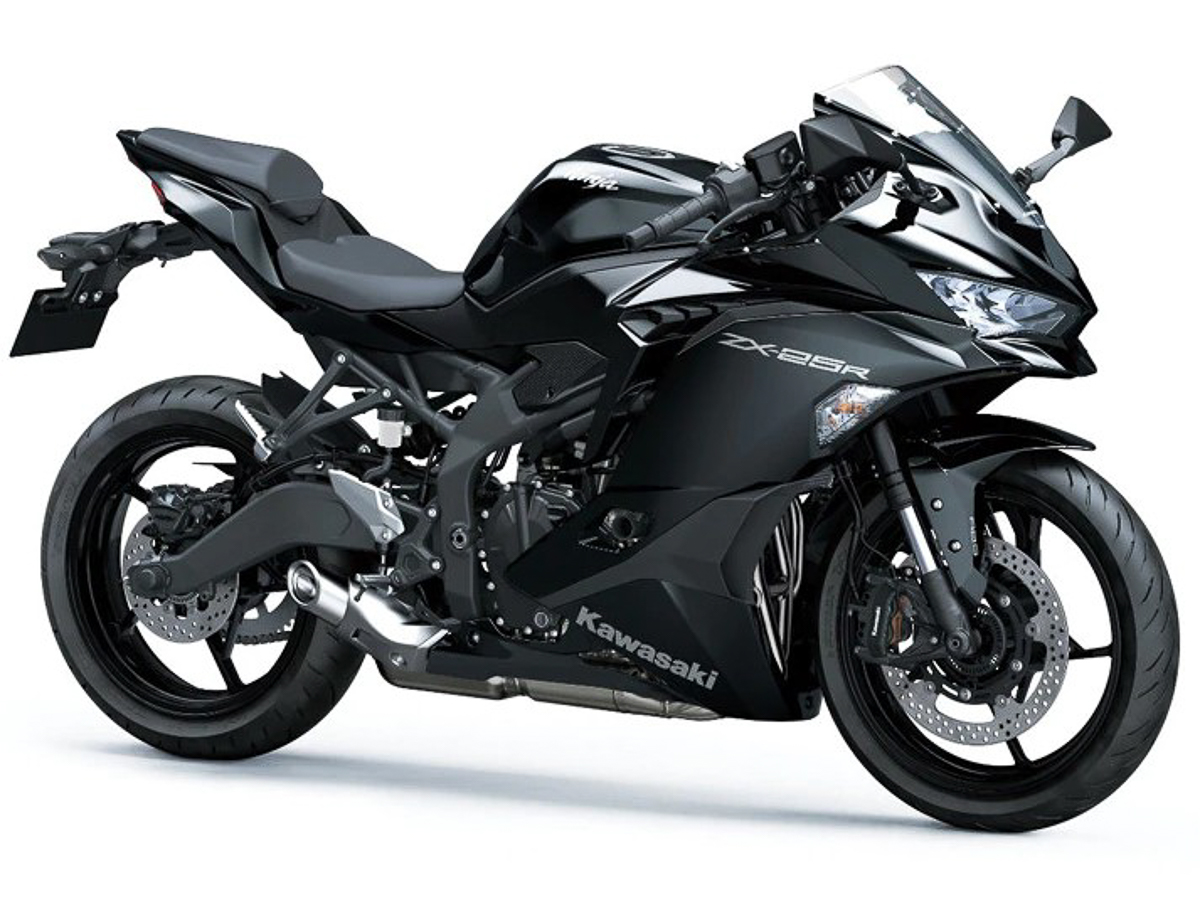
Showa SFF-BP Front Fork
The Ninja ZX-25R’s 37mm inverted front fork uses a Showa SFF-BP (Separate Function Fork – Big Piston) front suspension with 120 mm wheel-travel. This offers riders the convenience of having separate adjustments to the damping and rebound (vs traditional suspension systems that combine both in both forks). This advanced fork offers both racetrack performance and everyday usability. The first ever time that this feature us used on the 250cc class.
The rear suspension is a horizontal back link mono-shock with pre-load
adjustability and 116 mm wheel-travel
Kawasaki Traction Control
The Ninja ZX-25R is the first 250cc model to feature traction control. Provides enhanced sport riding performance and peace of mind under certain riding conditions to prevent accidents on low-traction surfaces. Comes in three modes. Mode 1 is for near perfect road conditions, Mode 2 is for normal riding conditions, and Mode 3 is for highly slippery conditions. Modes 1 and 2 prioritize maximum acceleration, while Mode 3 prioritizes maximum stability.
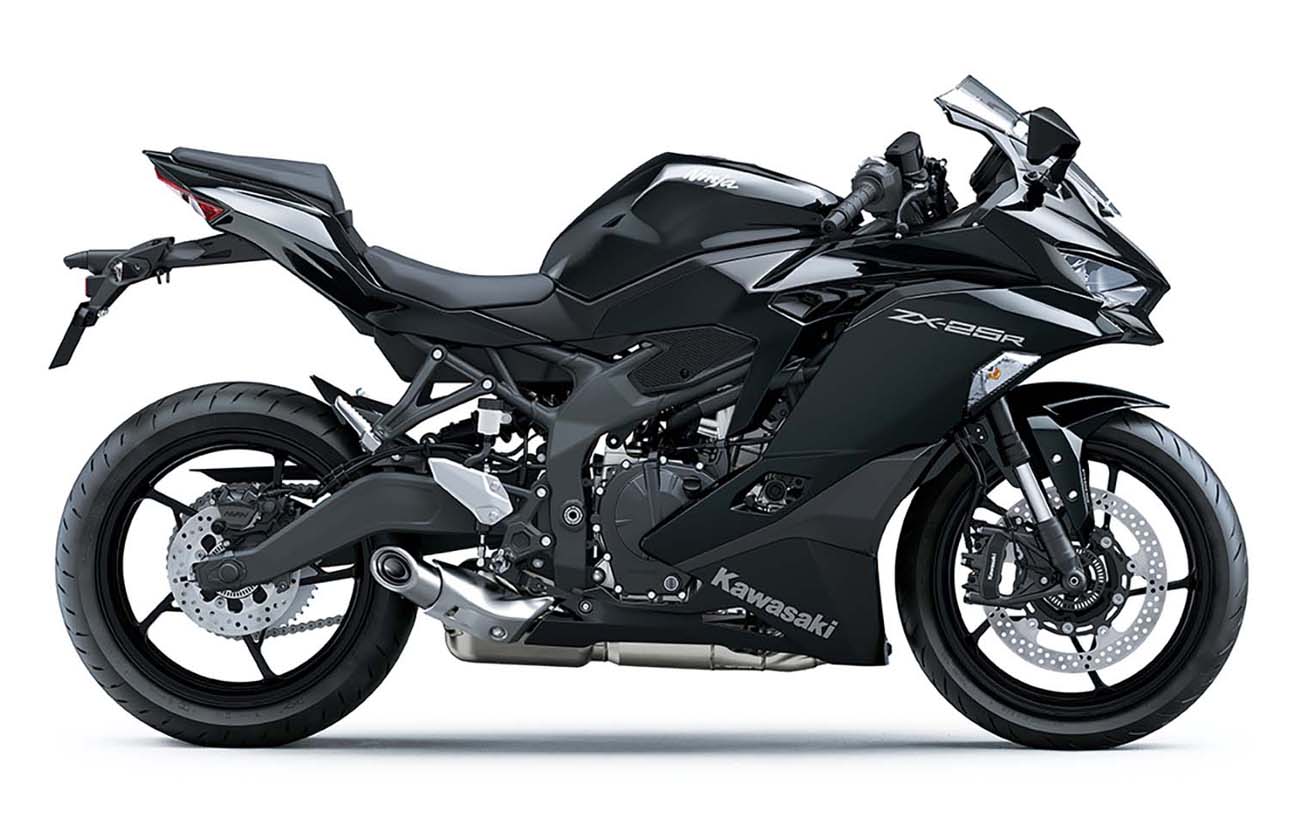

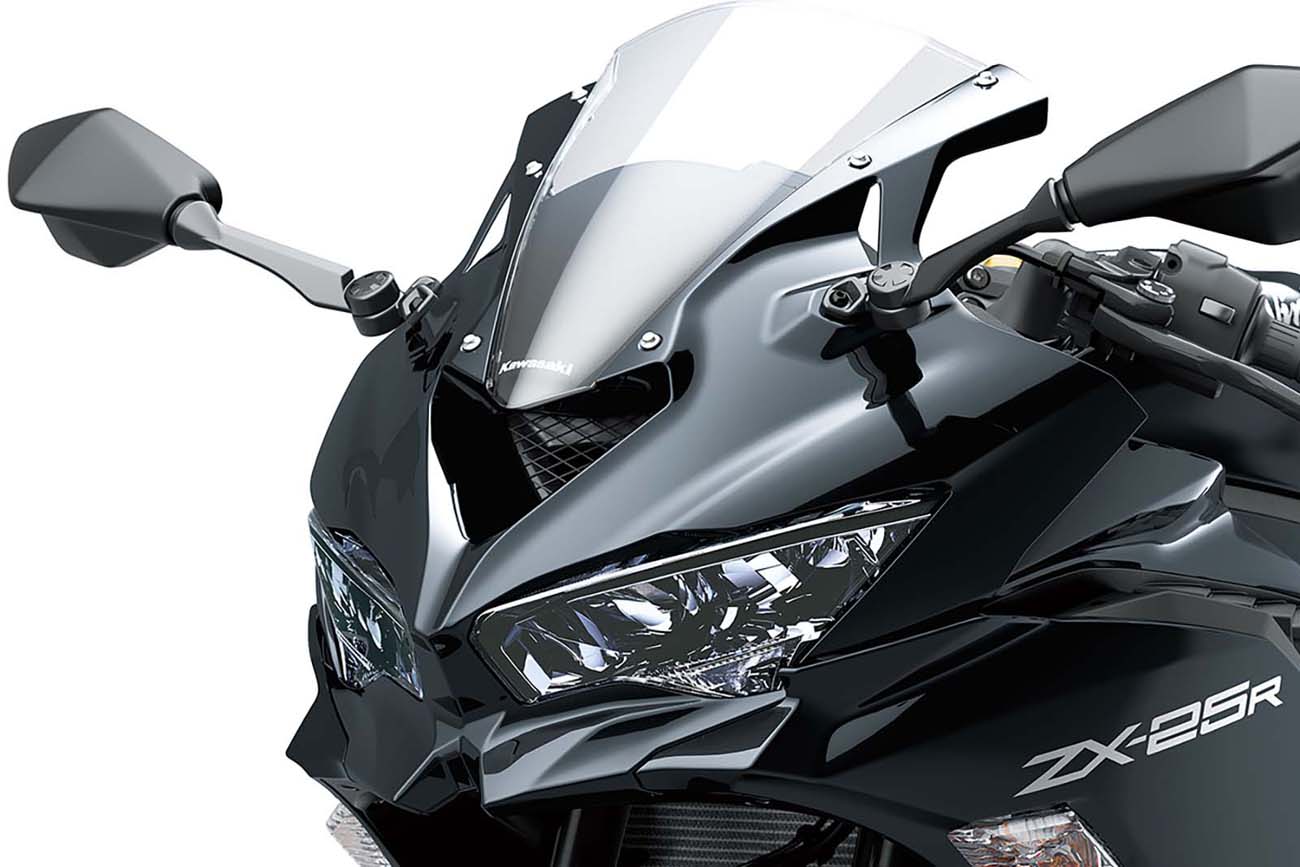
|
Any corrections or more information on these motorcycles will be kindly appreciated. |